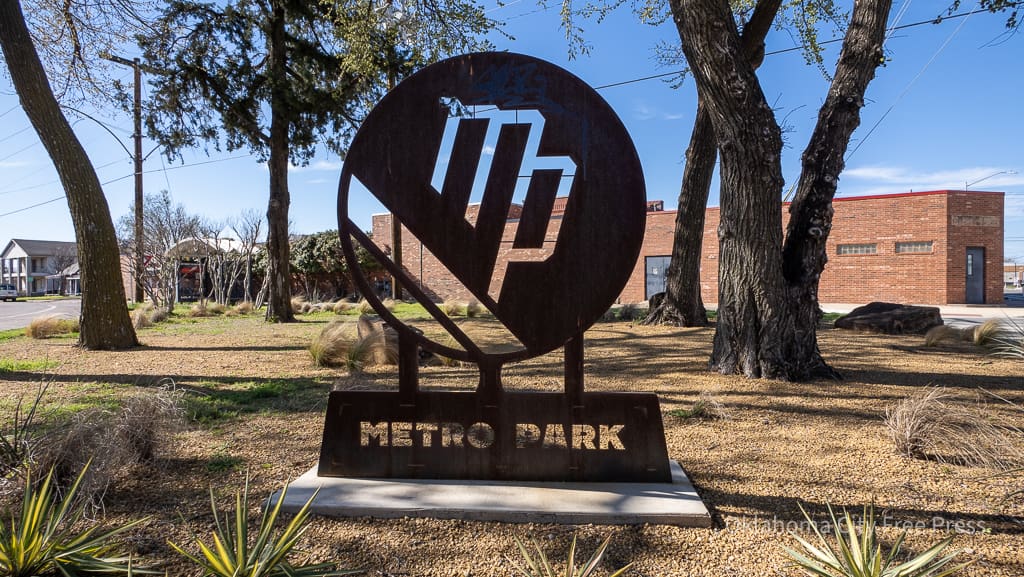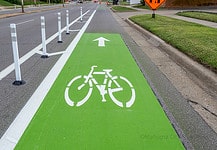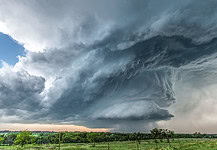Last Updated on August 6, 2023, 3:06 AM | Published: April 2, 2023
OKLAHOMA CITY — OKC’s Strong Neighborhoods Initiative is changing the face of the city in all the best ways.
So much of the conversation around affordable housing and neighborhood rejuvenation in Oklahoma City seems focused solely on the pragmatics and statistics of the issue, often reducing the housing topic to a simple numbers game with too few options for prospective new homeowners.
But just building a house or restoring the structures of a neighborhood aren’t likely to be enough. You have to make sure that people want to live there.
And that means putting some serious effort into landscaping, streetscaping, beautification, and public art to ensure that a neighborhood truly reflects its community and embraces the full range of OKC’s many cultural identities and vibrant aesthetics.

“All of those things contribute to our quality of life,” said Shannon Entz, Program Planner for Neighborhood and Commercial District Revitalization with the City of OKC Planning Department.
As one of the leading figures behind The City of OKC’s Strong Neighborhoods Initiative, or SNI, Entz thinks about these kinds of beautification and outdoor, public rejuvenation projects on a daily basis.
“Who doesn’t want to live on a tree-lined street?” she said. “Or who doesn’t want to live somewhere where they could walk anywhere to go to the pharmacy or the doctor or to work or to school?”
Neighborhood nature
One of the most immediate and noticeable ways that the city’s SNI projects are changing the face of OKC is by adding much more greenery and tree life to the revitalized neighborhoods.
“When anyone builds any home as part of an SNI project, the landscape ordinance requires they plant a tree in the front yard,” Entz said. “But that’s just for infill housing. We also do tree plantings that anyone in the neighborhood can apply for.”
Increasing the tree coverage and neighborhood landscaping is not only good for aesthetics, there are important practical benefits as well.
“One of the reasons is to increase the canopy above concrete and asphalt to help keep pedestrians cool and keep them safe when they’re walking,” Entz explained. “Our urban trees are extremely important to cities, especially if they can help cool off some of the pavement, and of course they’re also home to wildlife. So they really contribute.”
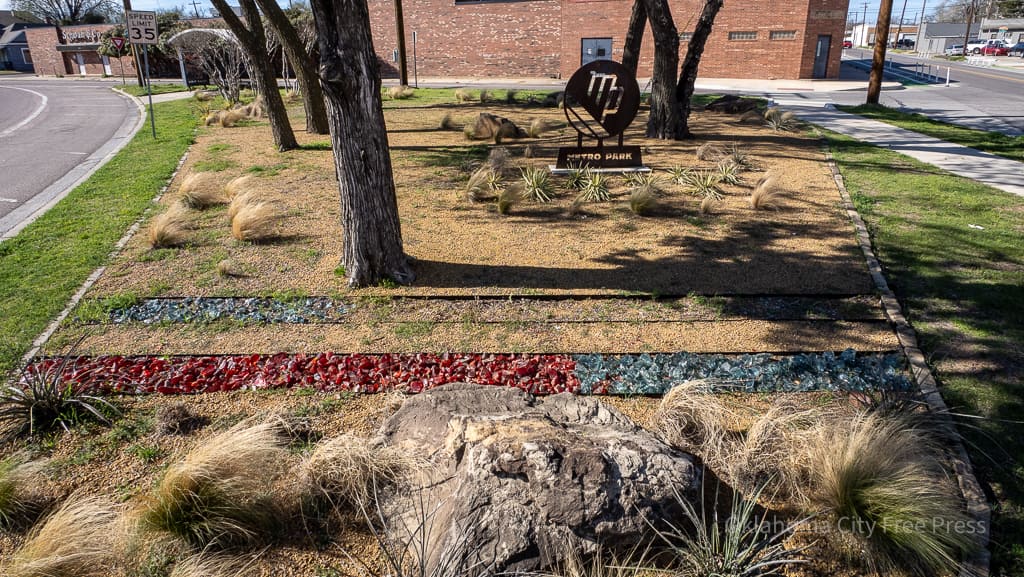
Adding sidewalks is another step some SNI projects take to encourage neighborhood unity and outdoor activity, such as in Metro Park, where sidewalks, landscaping, and community engagement have all come together in the “triangle” micro park at Linwood Blvd and Western Ave.
“That’s a fantastic one,” Entz said. “The neighborhood selected that site and asked for a significant amount of landscaping and gravel, but they maintain it. And their new sign is there.”
Open-air art and shared space
In addition to streetscape and landscape projects, the SNI program is often also focused on developing public artworks and artistic spaces in their neighborhoods.
“Public art is a big part of our program,” Entz said. “Just like trees and streetscapes, public art is something that everyone can experience and that can be a real catalyst for economic development and even for quality of life as well.”
The many public artworks that SNI has supported are among Entz’s favorite projects from the program, and she’s particularly excited about one that is just recently taking shape.
“In Capitol View, they want their neighborhood to be a monarch butterfly sanctuary,” she explained, “so every time they’ve applied for public art, it always has a butterfly theme to it. They have a small community space with three really tall, beautiful butterfly statues, and at McNabb Park, about ten large butterfly statues there as well.”
Of course, one of the most buzzed-about and anticipated SNI projects is the long-awaited Capitol Hill Plaza, itself something of a large-scale community arts and gathering space.
“It’s a fantastic location for people that have needed it for a long time to celebrate their culture,” Entz said. “We haven’t celebrated our international communities enough, and this one way that we can do that. So it’s about beautification, and it’s about economic development, but I think most of all, it’s about bringing together the community in a space where they feel safe and loved and like it’s their own. And that is priceless.”
Community character
It’s not always about changing the look of a neighborhood, though. Sometimes enriching a community’s aesthetic is all about staying true to its history.
When the SNI program officially selects a new OKC neighborhood for revitalization, Entz says that it’s never their intention to determine how the new homes or restored houses should look, rather it’s all about listening to what the residents themselves want.
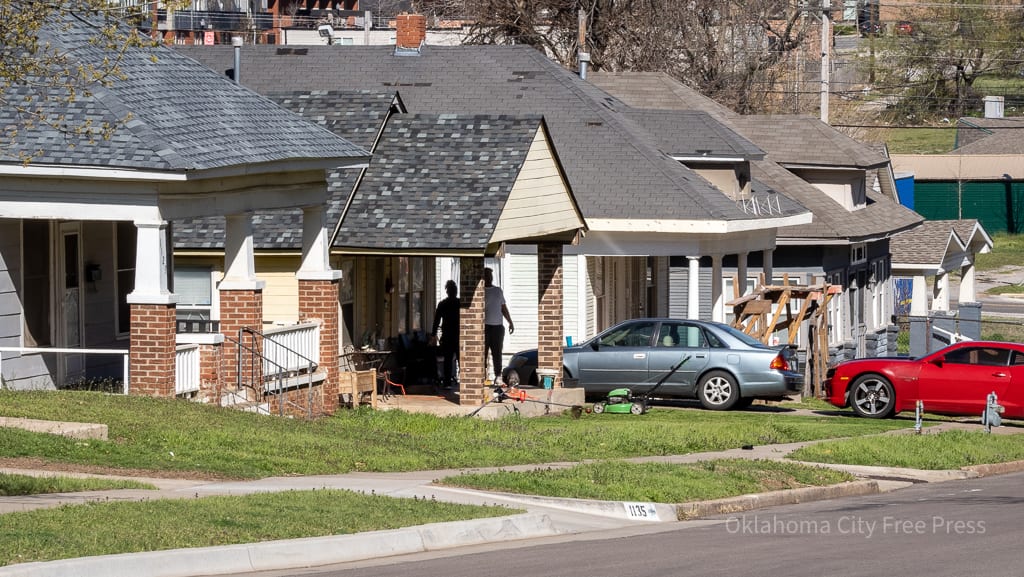
“It’s a true collaboration with the neighborhood,” she said. “We start with public engagement meetings where we try to bring the neighborhood together to talk about strategy. And they are just jazzed about it, telling us everything that they need.”
Chief among the aesthetic requests for new homes in nearly every SNI neighborhood in the city is a focus on preserving the character and visual styles that already exist in the community.
“The Culbertson East Highland neighborhood, for example, was very vocal that they did not want suburban-style homes built there,” Entz said. “They wanted front porch homes. Nine times out of ten, the neighborhoods want front porch houses. They want homes that look like the homes already on their streets.”
Local pride
Much more than just increasing property values or desirable aesthetics, Entz says that these revitalization projects are aimed at ensuring that existing residents are heard, represented, and reflected in their communities.
“These are low income neighborhoods for the most part, and they have day to day needs,” she said. “So for them to focus their efforts, and sometimes their money, towards beautification tells you how important that the space they live in is to them, and that they want to live in a place they’re proud of just as much as anyone else.”
Brett Fieldcamp has been covering arts, entertainment, news, housing, and culture in Oklahoma for nearly 15 years, writing for several local and state publications. He’s also a musician and songwriter and holds a certification as Specialist of Spirits from The Society of Wine Educators.
